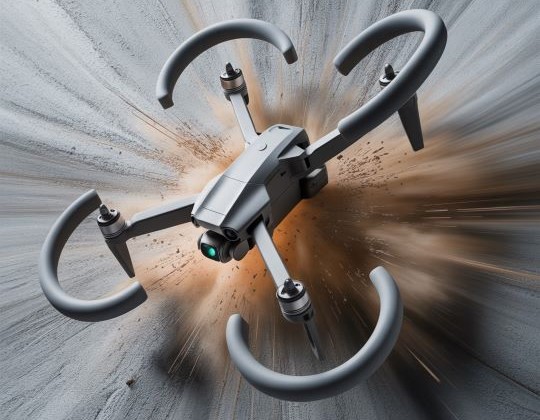
- Loading Mastodon feed...
CRASH (Collision-Resistant Agile & Safe Helicopter-drones) is an innovative research initiative aimed at creating a new generation of drones that can operate safely and efficiently in challenging indoor environments—even when collisions occur.
Why CRASH Matters
Special Forces often need to fly drones at high speed through cluttered, unpredictable spaces for reconnaissance missions. Current drones require extensive training and cautious piloting because even minor collisions can cause crashes. This slows down operations and increases cognitive load on operators.
CRASH addresses these challenges by developing drones that are:
- Impact-resistant thanks to advanced smart materials
- Agile and fast, enabling quicker reconnaissance
- Easier to operate, reducing pilot stress and training time
Key Innovations
-
Smart Materials for Collision Resilience
Integration of novel visco-hyperelastic foams into drone structures allows them to absorb shocks and maintain integrity after impacts. -
Multi-Modal Collision Detection
Embedded sensors and advanced algorithms will detect collisions and deformations in real time, enabling drones to adapt dynamically. -
Agile Control Strategies
Innovative control schemes (Model Predictive Control or Explicit Reference Governor) will optimize flight paths—even exploiting collision forces—to navigate faster and more efficiently. -
Embedded Sensing for Post-Collision Recovery
The drone will sense and respond to impact forces, ensuring smooth recovery and continued mission execution.
Impact and Applications
CRASH will empower Defence Special Forces with drones capable of rapid indoor reconnaissance, improving mission success rates and safety. Beyond military use, these technologies have potential applications in:
- Search and Rescue in disaster zones
- Infrastructure inspection in confined spaces
- Industrial and urban operations where agility and resilience are critical
Who’s Involved
The project is a collaboration between the Royal Military Academy (RMA) and VUB BruBotics, combining expertise in aerial robotics, AI-based control, and advanced materials science.

